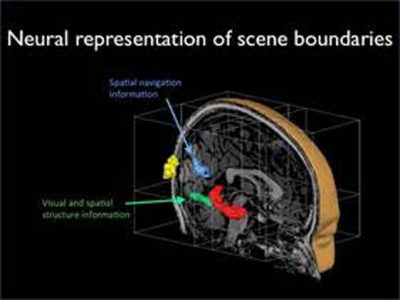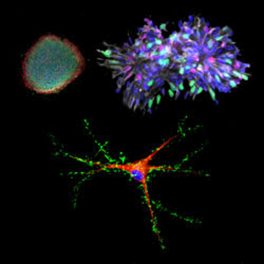By Jill Rosen
Humans rely on boundaries like walls and curbs for navigation, and Johns Hopkins University researchers have pinpointed the areas of the brain most sensitive to even the tiniest borders.
Cognitive scientists found one distinct region in the brain that reacts when the visual boundary has a vertical structure like a curb or a wall and another that reacts only when the visual boundary is tall enough to impede someone’s movement. The findings, online now, will appear in print in the August issue of Neuropsychologia.
“There is something giving ecological validity to a boundary — even a very small one,” said author Soojin Park, an assistant professor in the Department of Cognitive Science. “The boundaries in an environment hugely influence how we move within it. We wondered, what’s the neural mechanism behind that?”
Park and former Johns Hopkins graduate student Katrina Ferrara monitored the brain activity of 12 subjects as they were shown images of objects displayed on a flat mat, on a mat surrounded by a low curb, and on a mat surrounded by a wall.
Activity in the visual processing areas of the subjects brains increased as the size of the boundaries increased. When the subjects saw the curb, however, even though it was only an inch or two tall, the brain reacted almost as vigorously as when the subjects saw a full wall.
“The curb is so important and the brain is so sensitive to it, brain activity jumps significantly when someone sees one,” Park said. “There’s something very important about having that three-dimensional vertical structure.”
The reaction was the same even when the researchers changed the look of the mat, curb and wall, and the type of object displayed.
The part of the brain that reacted to the visual and spatial structure of a boundary, or when subjects saw a curb or a wall, is the ‘parahippocampal place area.’ This region responds preferentially to images of scenes and places over other objects or faces.
It was the ‘retrosplenial complex’ that reacted when subjects saw a boundary tall enough to be an obstacle. Just like the parahippocampal place area, this region responds preferentially to scenes, but recent research found that this region is important for spatial navigation rather than visual analysis of individual scenes.
This research was supported by an Integrative Graduate Education and Research Traineeship through the National Science Foundation, and a grant from the National Eye Institute.








